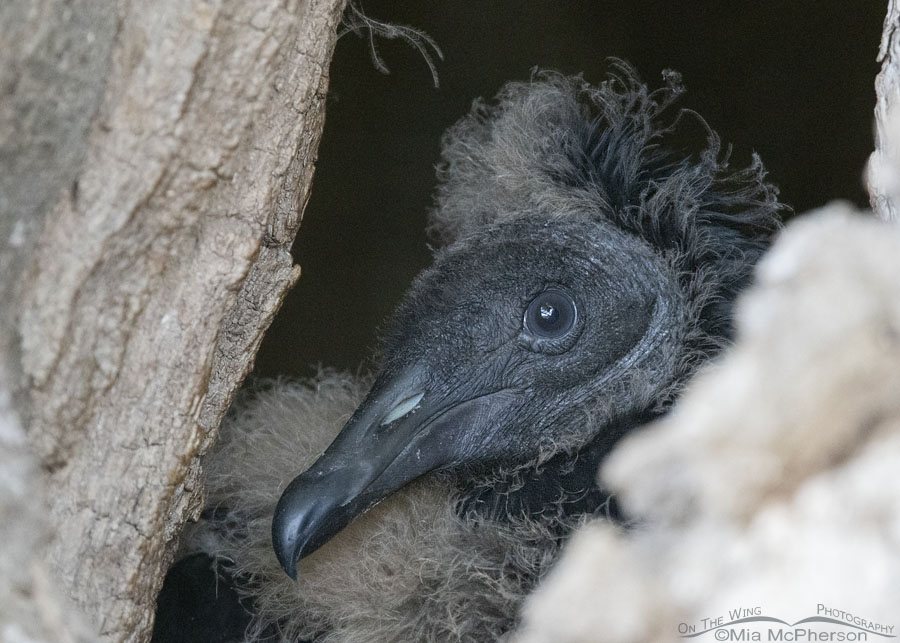This young Black Vulture in a tree cavity nest made me happy dance yesterday morning at Sequoyah NWR when it was close to the entrance of the nesting cavity.
My good friend and fellow wildlife photographer, Steve, had pointed out the vulture nest when he first took me to the refuge. We couldn’t get images of them until yesterday. Neither one of us uses flash on our subjects and until yesterday, we would have had to have used a flashlight to light up the nesting cavity to get photos.
 Young Black Vulture in a tree cavity nest – Canon R7, f7.1, 1/200, ISO 8000, +0.3 EV, Canon RF 100-500 mm at 500m, natural light
Young Black Vulture in a tree cavity nest – Canon R7, f7.1, 1/200, ISO 8000, +0.3 EV, Canon RF 100-500 mm at 500m, natural light
It was our wonderful luck to have this individual young Black Vulture right at the entrance to the ground level nesting cavity where we could both get images of the immature bird. Natural daylight lit it up for us. How great was that? I can tell you, it was my happy dance time!
Young Black Vultures stay in the nest for about two months and they take 75 to 80 days after hatching to fly. So for about 15 to 20 days after they leave the nest they simply walk around until they take their first flight. They have white feathers soon after they hatch and they gradually get black feathers before they leave the nest. This young vulture is in that in between white and black feather stage.
I haven’t photographed a Black Vulture since I moved away from Florida in 2009. We don’t have this vulture species in Utah although given the effects of climate change, I suspect it won’t be long before they are found in the state.
Not only did I get to take more Black Vulture images, it was a young one still in the nest. Yes, I was thrilled! Over the moon. Walking on clouds.
Life is good.
Mia
Read Steve’s account with this young Black Vulture on his site here.
Click here to see more of my Black Vulture photos.


Fabulous pic. Incredibly deep eye contact. There’s something primal about vultures that always intrigues me. Interesting birds. Thanks Mia.
What a precious youngster, Mia! I’m so glad you shared this shot and your delight over being able to take it. 🙂
I love that you are doing so many happy dances at the moment – and love this image too.
A very touching shot.-Jeri
Thank you for the terrific image and the information on the Black vulture. We have them here; occasionally I have encountered them and the Turkey vultures together. Never a little one.
I love them. They are calm gentle birds so easy for me to admire.
Excellent work, Mia!
Wonderful picture!
OMGosh!! We have black vultures here in Niagara & I have seen hatchlings in the fall at the “teenage” stage. To find this young one would be such a moment. I would have been doing a happy dance too.
What a great opportunity. Great pic!
Wow, wonderful